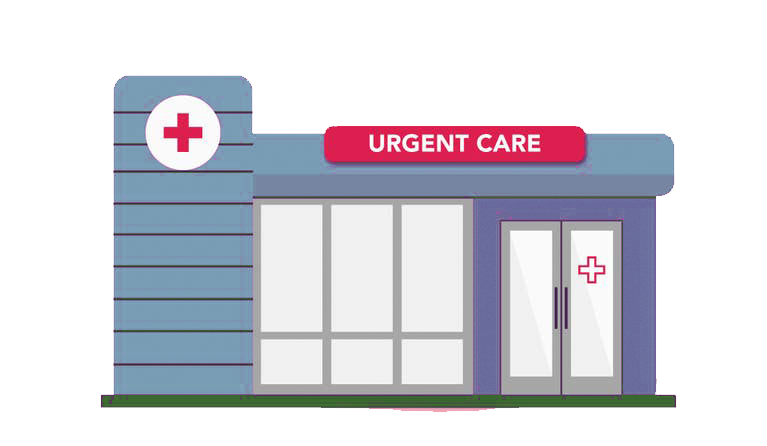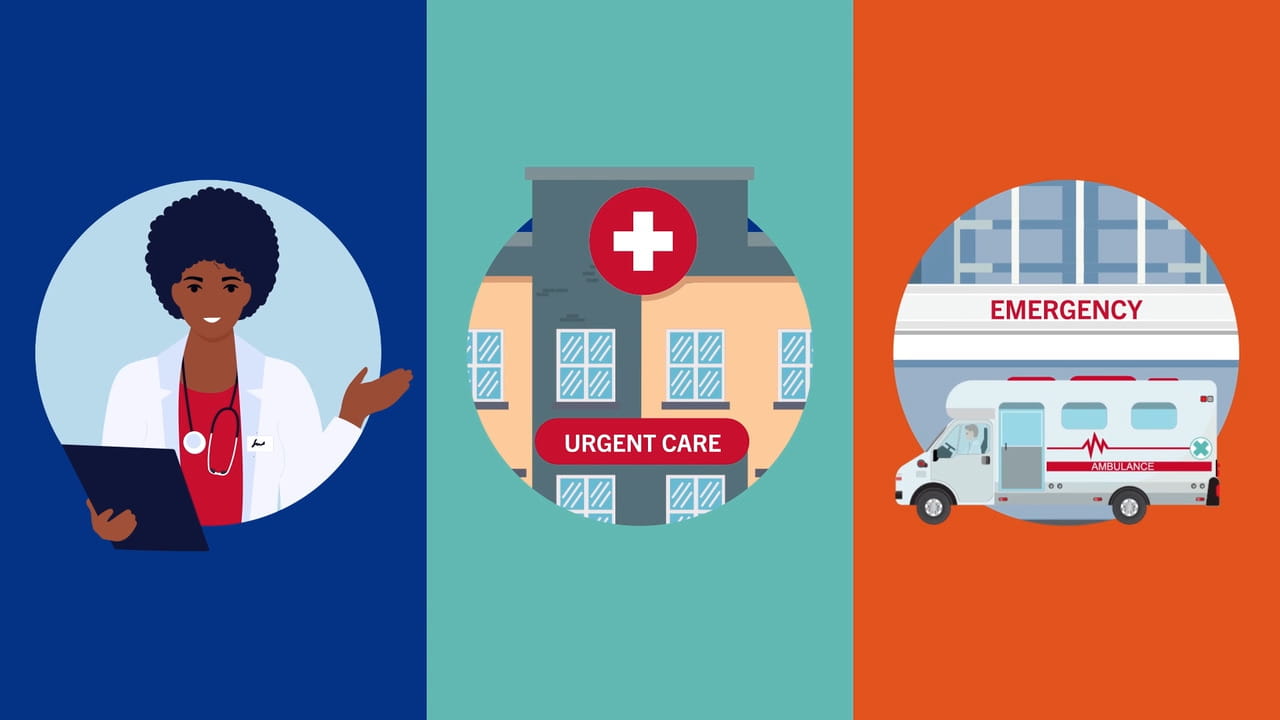Typical Problems Treated at Urgent Care Clinics You Must Know
Typical Problems Treated at Urgent Care Clinics You Must Know
Blog Article
A Comprehensive Guide to Utilizing Urgent Care Prompt Treatment of Common Health Problems and Conditions
Urgent treatment facilities play a crucial role in the healthcare landscape, providing an essential option for clients seeking prompt treatment for non-life-threatening conditions. What remains to be checked out are the specific problems that require a browse through to urgent care and the advantages of picking this choice over conventional emergency situation solutions.
Understanding Urgent Care Provider
 Immediate care solutions offer a crucial bridge in between medical care and emergency situation divisions, addressing a series of non-life-threatening conditions that need instant interest. These centers use expanded hours and typically operate without the requirement for a visit, making them an easily accessible choice for individuals experiencing sudden medical concerns outside of regular workplace hours.
Immediate care solutions offer a crucial bridge in between medical care and emergency situation divisions, addressing a series of non-life-threatening conditions that need instant interest. These centers use expanded hours and typically operate without the requirement for a visit, making them an easily accessible choice for individuals experiencing sudden medical concerns outside of regular workplace hours.
In addition to treating immediate conditions, lots of centers provide analysis solutions, such as X-rays and research laboratory screening, which enhance client treatment and assist in quicker diagnoses. Understanding just how to successfully utilize immediate treatment solutions can cause better wellness outcomes, as individuals receive the essential treatment without delay without overwhelming health care service providers or emergency solutions. This model boosts the overall effectiveness of the health care system, making certain that people get suitable care in a prompt manner.
Typical Problems Dealt With
A vast range of typical problems can be efficiently taken care of at immediate care facilities, making them a practical alternative for patients seeking immediate clinical interest. These facilities are equipped to deal with a selection of non-life-threatening problems that require punctual therapy.
Among the most regularly dealt with problems are respiratory infections, including colds, influenza, and bronchitis. Immediate treatment facilities additionally address minor injuries, such as strains, fractures, and pressures, offering essential care and stablizing. In addition, skin problems like breakouts, insect attacks, and small burns are commonly evaluated and dealt with.
Stomach problems, including nausea or vomiting, throwing up, and looseness of the bowels, often prompt sees to urgent treatment, specifically when signs are severe. Immediate care service providers can also handle urinary tract infections and various other non-emergency conditions. Furthermore, patients can receive vaccinations and precautionary care services, such as flu shots and travel immunizations, making immediate care an accessible source for general health care.
## When to Go To Urgent Care
Recognizing when to check out an urgent treatment facility can significantly improve the performance of your healthcare experience. Urgent treatment centers are designed to supply prompt focus for non-life-threatening problems that require prompt clinical intervention. Common factors to look for care at an immediate treatment center consist of minor injuries, such as fractures, pressures, and strains, in addition to acute diseases like the flu, strep throat, or urinary system system infections.
In addition, immediate care is ideal for conditions that exhibit intensifying symptoms but are not serious enough for an emergency room browse through. For circumstances, consistent throwing up, dehydration, or extreme discomfort that necessitates quick interest can all be efficiently managed in this setup.
It is important to set apart between immediate treatment and emergency care; the last is scheduled for serious circumstances, including upper body pain, serious bleeding, or loss of awareness. Recognizing these distinctions not just simplifies your medical care journey however likewise eases the concern on emergency solutions. By evaluating the urgency of your condition properly, you can guarantee prompt and appropriate healthcare, enabling a quicker recovery and improved health and wellness results.
What to Expect Throughout Your Go To
During your see to an immediate care facility, you can expect a structured process made to address your clinical requirements successfully. Upon arrival, you will normally examine in at the reception workdesk, where you will give your individual details, insurance coverage information, and a short description of your signs and symptoms. This preliminary action is vital for making sure that your case is focused on suitably.
Adhering to check-in, you may be asked to complete a case history type, detailing any kind of pre-existing conditions or medicines you are presently taking. visit here As soon as your paperwork is full, a triage registered nurse will certainly evaluate your problem and establish the necessity of your scenario. This analysis will help direct the rate at which you obtain care.
After triage, you will certainly be seen by a health care copyright, who will conduct a thorough examination and review your symptoms thoroughly. Relying on your medical diagnosis, the provider might get tests, suggest you could try these out medicines, or suggest follow-up treatment. Throughout your visit, immediate care staff will aim to keep you informed concerning your therapy strategy and any required following steps, making certain a favorable patient experience.

Advantages of Choosing Urgent Care
Immediate care facilities supply a range of advantages that provide to patients seeking immediate medical interest for non-life-threatening conditions. One of the key benefits is accessibility; numerous immediate care facilities operate expanded hours, including evenings and weekends, allowing patients to receive care when standard workplaces are closed.
Additionally, immediate treatment facilities are typically outfitted to handle a variety of usual disorders, such as minor injuries, infections, and diseases, without the demand for an appointment. This ease is specifically helpful for people with hectic timetables or those who can not wait on a main care visit.
Moreover, urgent treatment solutions tend to be a lot more affordable than emergency clinic gos to, with reduced charges and co-pays, making them a financially sensible selection. Numerous insurance plans cover immediate care brows through in a similar way to key care consultations. Overall, immediate treatment centers use prompt, economical, and effective medical treatment, making them an attractive choice for people in demand of prompt treatment.

Conclusion
In conclusion, immediate care centers work as an essential resource for resolving non-life-threatening medical concerns effectively and effectively. By giving accessible services for typical ailments and injuries, these centers relieve the worry on emergency situation spaces, ensuring timely therapy. Comprehending when to make use of urgent care can improve client end results and contentment. Ultimately, the calculated use immediate care adds to an extra structured health care experience, stabilizing quality care with benefit and price.
Recognizing how to efficiently utilize urgent care services can lead to better wellness outcomes, as individuals receive the essential treatment immediately without frustrating primary care providers or emergency services. Patients can get vaccinations and preventive care services, such as flu shots and take Read Full Report a trip immunizations, making urgent care an easily accessible resource for general health upkeep.
Usual factors to seek care at an immediate treatment facility include small injuries, such as cracks, pressures, and sprains, as well as severe illnesses like the influenza, strep throat, or urinary system infections.
One of the main benefits is access; many urgent treatment facilities operate extended hours, consisting of weekend breaks and evenings, permitting people to obtain treatment when traditional workplaces are shut. Overall, immediate care facilities supply prompt, budget-friendly, and reliable clinical treatment, making them an attractive option for individuals in need of instant treatment.
Report this page